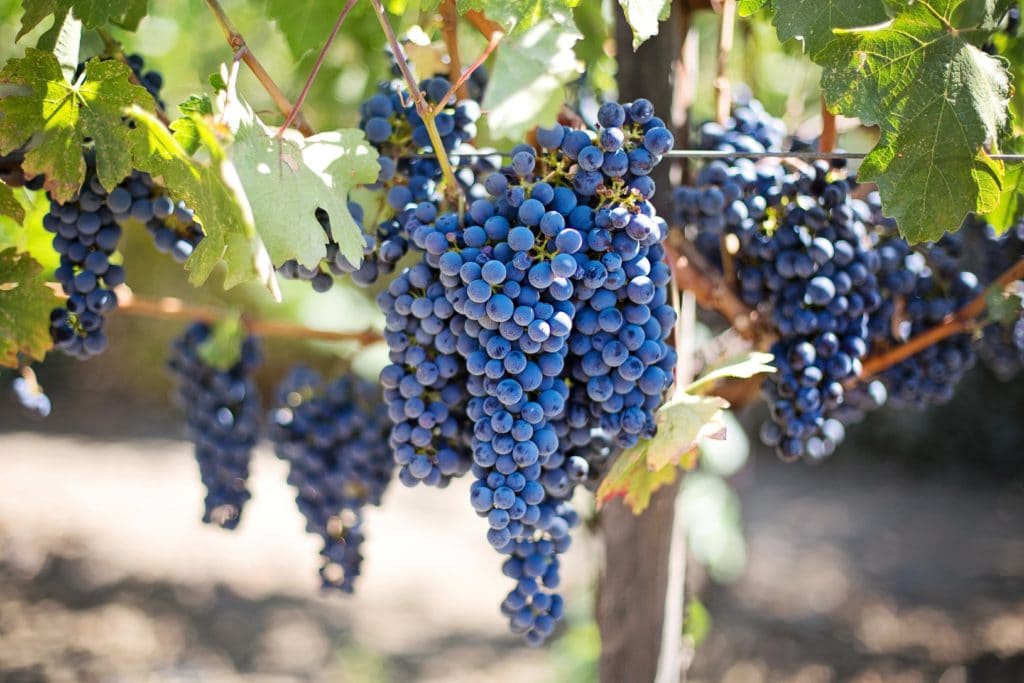Typically, the wines you buy for everyday drinking won’t be made from unusual grape varieties. Makers use only a relatively small number of grape varieties to produce the most common wines. These include Sauvignon Blanc, Pinot Noir and Merlot, Cabernet Sauvignon, Shiraz and Chardonnay.
This is no accident. Wine makers use them because they know and trust these varieties to produce great wines for them. They generally only work with grape varieties that are compatible with the soil and climactic conditions in their particular terroir.
The unusual grape varieties that deserve your attention
Winemaking is such a precarious industry, with so much depending on having a good harvest. These fine margins mean that many producers aren’t prepared to take the risk on lesser known grape varieties.
There are some who do however, and the results are wonderful. Here we pick out some unusual grape varieties and choose a wine made from each for you to discover.
1. Centesimino grapes, Italy
Known locally as Sauvignon Rosso, this Italian grape variety is usually used to make dessert wines. The grapes are found only in the Emilia Romagna region in northern Italy, close to the Apennine Mountains. Centesimino has the cut grass and herbs aroma of Cabernet Sauvignon, although the varieties aren’t closely related.
If you like a well-balanced, full-bodied wine with a hint of summer flowers, then wines made from Centesimino grapes are perfect.
One wine to try: Leone Conti Arcolaio Ravenna IGT, 2009
Fruity and mellow with hints of oak, this wine has a high alcohol content but still feels smooth and well-balanced.
2. Cinsault grapes, France
Cinsault grapes are loved by wine makers because they are a tough variety that can stand up to poor weather conditions.
So why have we included them in our list of unusual grape varieties? Because although Cinsault grapes are traditionally blended with more common varieties, they also make great wine on their own.
Wines made only from Cinsault grapes are rare, but well worth investigating if you can find them. Despite their tough reputation, they produce delicate and subtle red wines.
One wine to try: Frick Winery Cinsault, 2015
This one is a long way from its French home, but this Californian vintage is a great example of a Cinsault. Deeply fruity with a sustained dry finish.
3. Ruché grapes, Italy
Locals in the Asti area of Piedmont in Italy know this unusual grape variety as a special one, reserved only for celebrations. Piedmont produces some of the world’s favourite Italian wines. But this one is much more of a local secret and is produced in a tiny winemaking region of only seven small villages. Ruché wine has a gentle aroma of roses, with a hint of spice and autumn fruits.
One wine to try: Crivelli Ruche di Castagnole Monferrato
The perfect balance of acidity and fruit, this medium-bodied red also has the subtle aromas of lavender and wild flowers.
4. Mondeuse grapes, France
The Savoy region of eastern France is home to the deeply flavoured Mondeuse grape. It’s an old variety rarely seen outside of the region, which is a shame as these grapes produce richly flavoured wines.. For collectors, there is lots of potential for putting a few bottles aside to improve with age. Mondeuse wines are full bodied with hints of plum and peppery spice and go perfectly with lamb dishes.
One wine to try: Domaine Belluard Savoie Mondeuse
A gorgeously perfumed example of this rich red wine from Savoy.
5. Albariño grapes, Spain
We’re off to Spain for our final grape variety. Albariño grapes come from Galicia and you can almost taste the sea air in the white wines made from this variety. The grapes have plenty of acidity without it being overpowering. They’re subtly floral with a hint of peach, and in Portugal they’re also used in vinho verde.
One wine to try: Bodegas del Palacio de Fefinanes ‘Albarino de Fefinanes’
Bursting with fresh mineral flavours, try a glass of this great Galician wine with plate of seafood.

